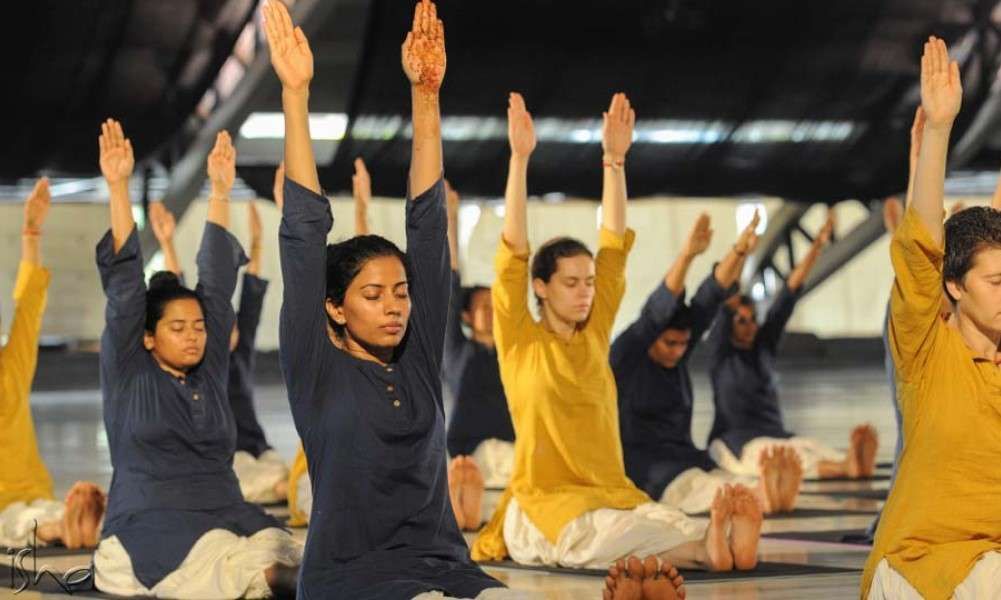Why You Shouldn’t Speak During Asanas
Sadhguru looks at why it is absolutely essential to stay silent and focused while practicing asanas.

Questioner: Why should we not speak when doing an asana or correct others while they are in an asana?
Sadhguru: An asana is a dynamic way of meditating. Because you cannot sit still, you do something else to become meditative. To take you back to the Yoga Sutras – Patanjali said sthiram sukham asanam. That which is absolutely stable and comfortable is an asana. This means your body is at ease, your mind is at ease, and your energy is vibrant and balanced. Asanas are a preparatory step to come to a state of being naturally meditative.
In a way, asanas are a dynamic way of meditating. To think that when you are meditating, you can have a conversation is ridiculous. The same goes for asanas. Speaking triggers a number of changes in your system. You could check this yourself. First sit quietly and check your pulse rate. Then speak intensely and check your pulse rate – it will be very different. The pulse is just one example. Speaking not only changes the physiological parameters – even the energy parameters change dramatically. Above all, without focus, how to do an asana?
Subscribe
Once, I was invited to speak in a yoga studio in the US. This lady is an Isha meditator and she had been a yoga teacher for many years. When I came to her yoga studio, music was playing, and she was in ardha matsyendrasana, talking non-stop into a microphone to the group. When I saw this, I wanted to leave, but she recognized me, said “Hi,” jumped up out of the asana, and came towards me. I took her aside and told her this is not the way to teach yoga because it brings serious imbalances to one’s system, and it turned out that she actually was suffering from them. She gave up teaching after some time, and these issues disappeared.
There should be no talking while doing an asana, and no going into any asana whenever you feel like it. I have seen people doing some asana during a bathroom break, because they want the world to know that they are doing yoga. This is silly. If you are able to sit without the need to run to the bathroom, without the need to talk to anyone, without the need to drink anything – that is a good advertisement for you if you are doing yoga. You do not have to get into a posture to tell everyone that you are doing yoga.
As a rule, you never ever speak in postures because focus, breath, and what happens to your energy system are most important. And above all, asanas are a preliminary meditative state. You cannot talk in your meditation. If you speak while doing an asana, you will disturb the breath, the mental focus, and the stability of your energy system.
To the question of corrections – in a way, physically correcting someone would amount to using props. If the teacher makes the corrections clear, people should be able to consciously correct the asana. Otherwise, later, they will make the same mistakes again. Another aspect is, if they are already in a certain state and you try to physically correct the posture by touching them, you could cause damage.
To give an example – just moving my finger involves so many things. My muscles, ligaments, skeletal system, mind, and energy have to work in a certain way. Suppose you hold my finger and move it, it is a completely different matter. So the teacher should tell you until you understand how it should be done, but you should make the effort to do the correction from within.
Editor’s Note: Isha Hatha Yoga programs are an extensive exploration of classical hatha yoga, which revive various dimensions of this ancient science that are largely absent in the world today. These programs offer an unparalleled opportunity to explore Upa-yoga, Angamardana, Surya Kriya, Surya Shakti, Yogasanas and Bhuta Shuddhi, among other potent yogic practices.


